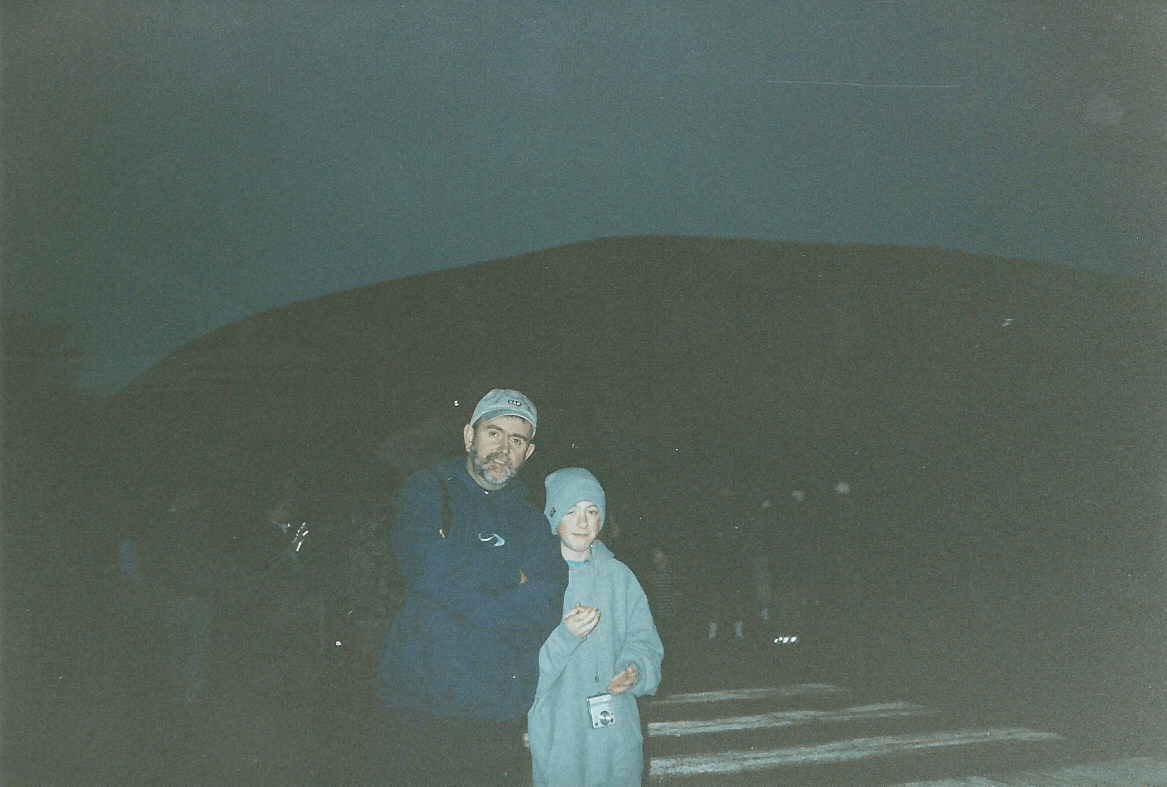U is for Uluru
On 26 October 2019, Uluru was officially closed to climbers. The rock is sacred to the Pitjantjatjara Anangu, the Aboriginal people of the area, who believe that the spirits of their ancestors continue to reside there. Climbing was not permitted under Anangu law but tourists began to ascend in the 1930’s. For decades, the indigenous population have pleaded with visitors to respect their culture and just walk around the base.
In 2004 we hired a camper van in Alice Springs and headed for Uluru. We hadn’t thought much about it but ‘presumed we’d climb it’ – how amazing it would be to say that we’d stood on the top of Ayers Rock. Meanwhile, when we arrived at the campsite we signed on for a dawn walk around the base of the rock.
The guide (couldn’t put a name on him now if my life depended on it!) wasn’t local but he was brilliant. He had such respect for the rock that although he’d been living in the area for several years he’d never climbed. By the end of the tour, that respect was instilled in every member of the group – none of us would ever set foot on it.
The group was being dropped back to the campsite in a communal bus – anyone could use it. As we waited for it to fill, this guy (nationality unrevealed!) about 30 years old boarded. He was decked out from head to foot in serious khaki – you know the look – cap, shirt, shorts, socks… everything matching and accessorised with a rucksack and belt – both jangling with every known tool and gadget. He was sweating buckets and looked absolutely wrecked. He sighed and groaned as he awaited the question which no one was going to ask!
Finally our guide inquired ever so nicely whether he’d reached the top. He had of course. The guide asked him what it was like up there and our pal was off, sharing his morning’s experience, totally oblivious to the fuming indignation emanating from all those around him. The guide nodded away politely – he knew he’d done his job and his message could not have been rammed home in a more effective way!
 (first light, Uluru, August 2004…..)
(first light, Uluru, August 2004…..)
 (….and a short while later)
(….and a short while later)
♦♦♦♦♦♦♦♦♦♦


One of the things which differentiates a traveler from a tourist is the former’s ability to understand and respect local traditions, cultures and help the local people alongwith preserving the environment.
Loved this post of yours. Thank you so much for sharing.. 🙂
I so agree with Abirbhav.
Thank you so much Madam.. 🙂 I attempt to be more inclined towards being an actual traveler than a tourist or an invasive selfie happy person. I try to buy or eat the local and traditional offerings, strictly. It feels good to know about other like minded people. Thank you once again.. 🙂
Pleasure!
Very well expressed Abirbhav – thank you for your input.
You are most welcome Madam.. 😊 Pleasure reading it..
So true there is a difference. My friends and I make an effort to emerge ourselves in the culture and supporting local efforts. Missed visiting this site but will visit on my return.
Glad to know Madam that you try to support the local efforts and wish to learn more about the local culture..!! Thank you so much.. 😊
Welcome back – thank you for your input!
Great story
That’s a gorgeous picture of First Light at Uluru, treasure that one. We never made it to the famous rock, spending too long in the flesh-pots of Sydney and Cairns (but I don’t resent that) but I enjoyed your experience. Your Uluru rock climber reminds me of a couple we met in Kenya before we went off on our 6-day safari. They had bought the full Hemingway kit, safari suits, long shorts, long white socks, desert boots, wide-brimmed bush-hats and enormous binoculars strung round their necks – matching set him and her. Looked right eejits and the last straw – he had packed a white jacket for dinner in the jungle. Too many Somerset Maugham books I think, but it afforded us a good few laughs.
Love it!!!!!
There is a story there which I should work on. Maybe one day.
Loved the Uluru post. Was there last week and totally agree with the decision to stop the climbs. Sacred is sacred!!!
I presume its still attracting just as many visitors as before? I’m sure people would still visit just to see it rather than climb….
A great reminder that a lot of times, there is a lot more to a destination than personal agenda. And we simply have to respect it.
Absolutely – applies pretty much everywhere really doesn’t it.
True.
Yes it does. The large natural bridge in Aruba collapsed a few years ago and the natives attribute the cause to people riding on it with jeeps etc.
Another great one Marie
Thank you . XXX
Hi, I’ve been planning the spring vacation, booking flights, making hotel reservations, etc. for months now, and get more excited with each day.Pegasus uçak bileti
Lucky you! Lets hope we’ll all get going again soon!
I have loved reading about each trip and your mouthwatering photos and descriptions of your meals.
Wishing you a wonderful 2020 and may it be filled with many more adventures.Pegasus uçak bileti
Thank you so much – looking forward to the time we can get going again……